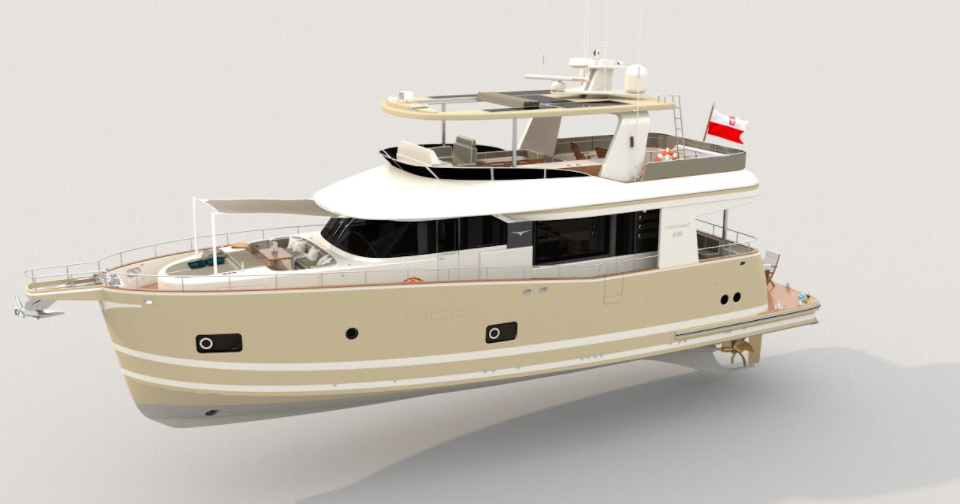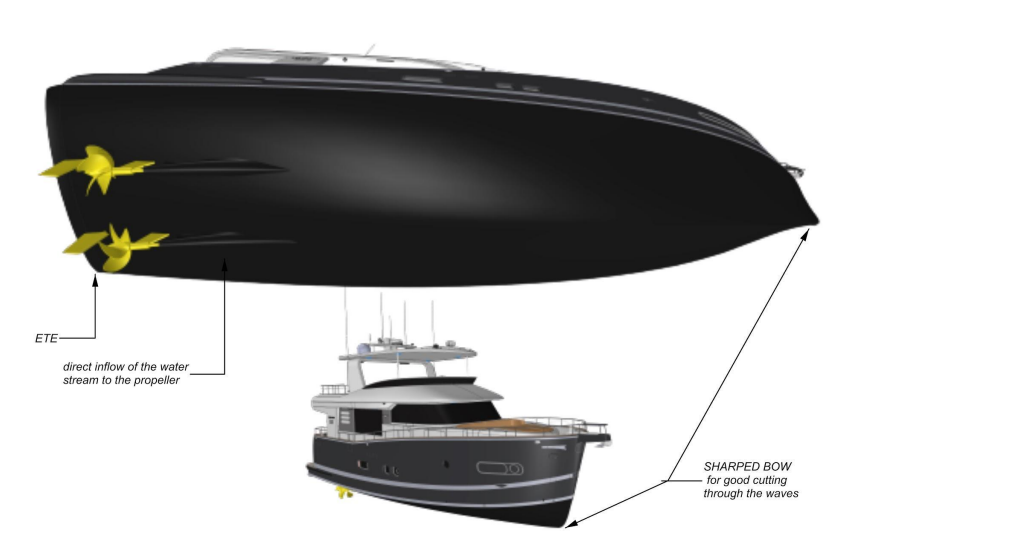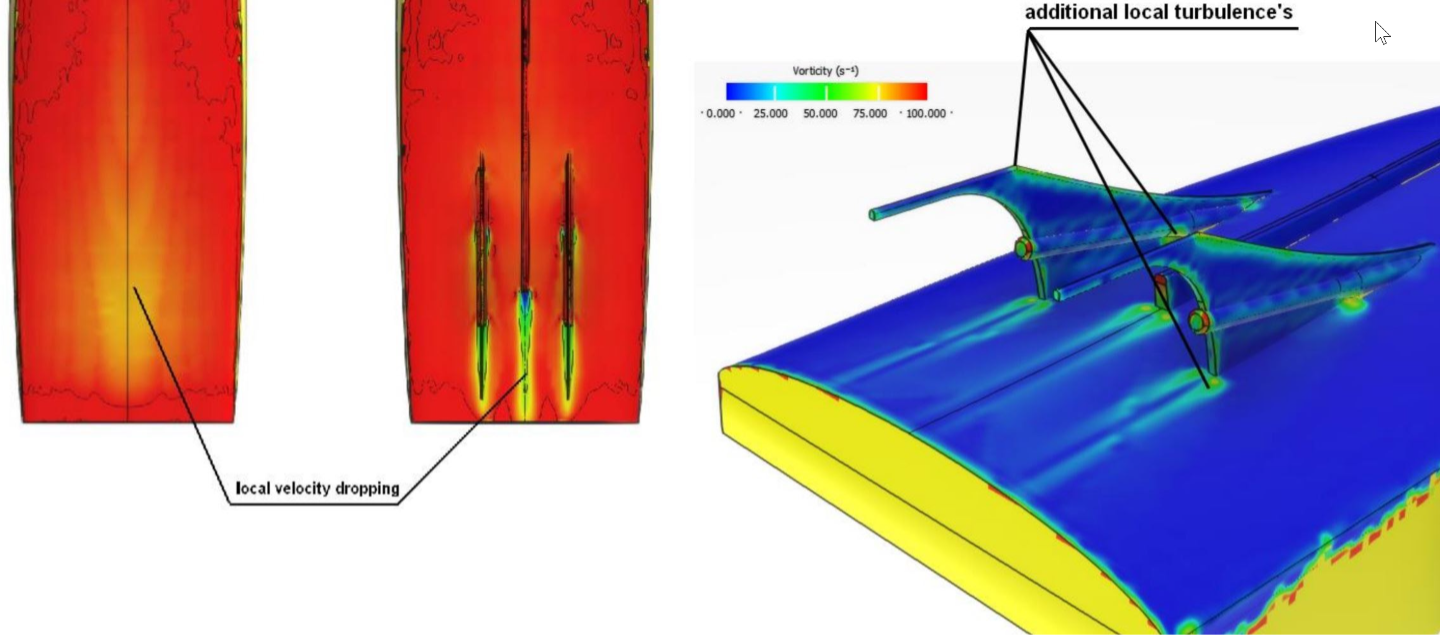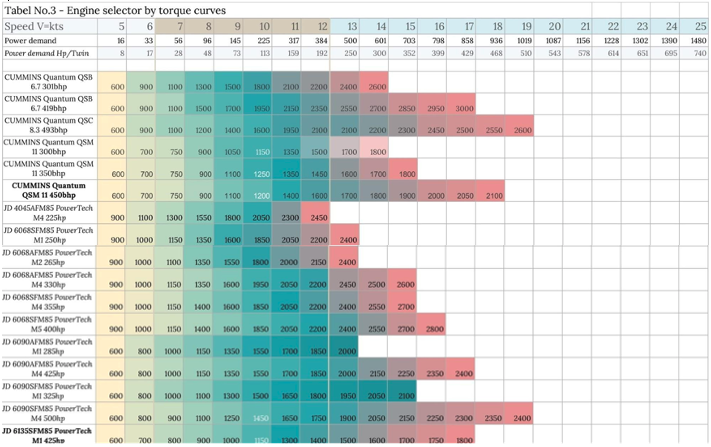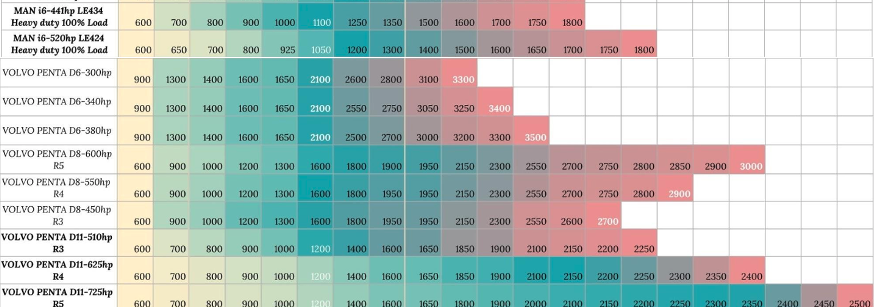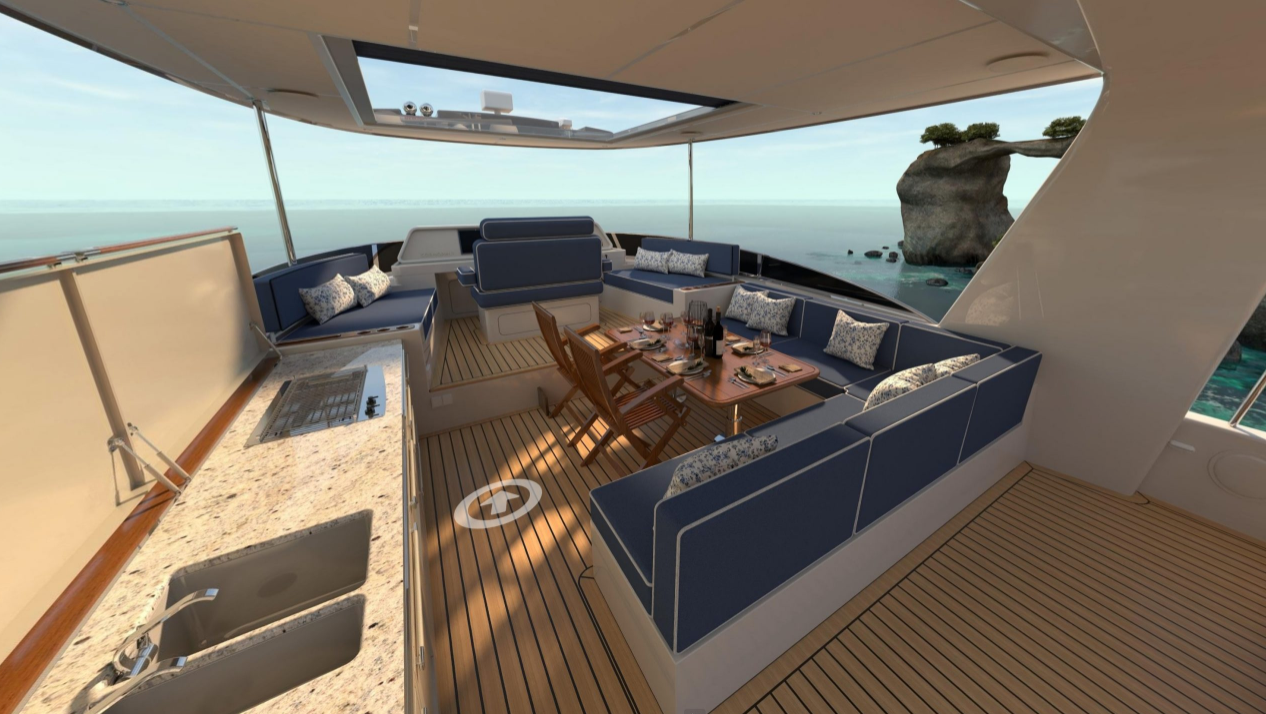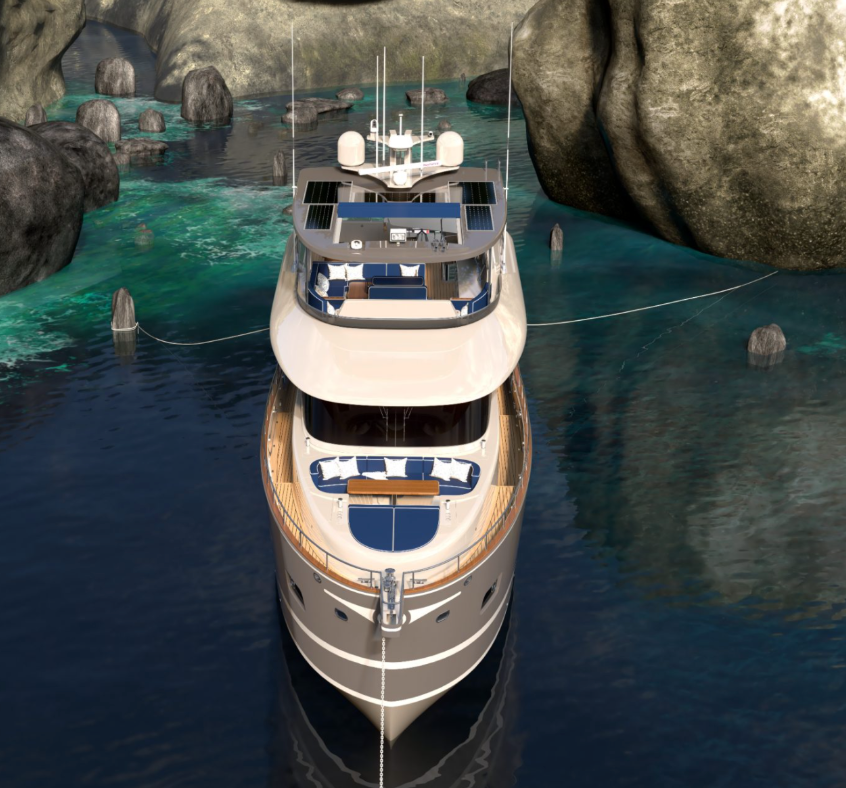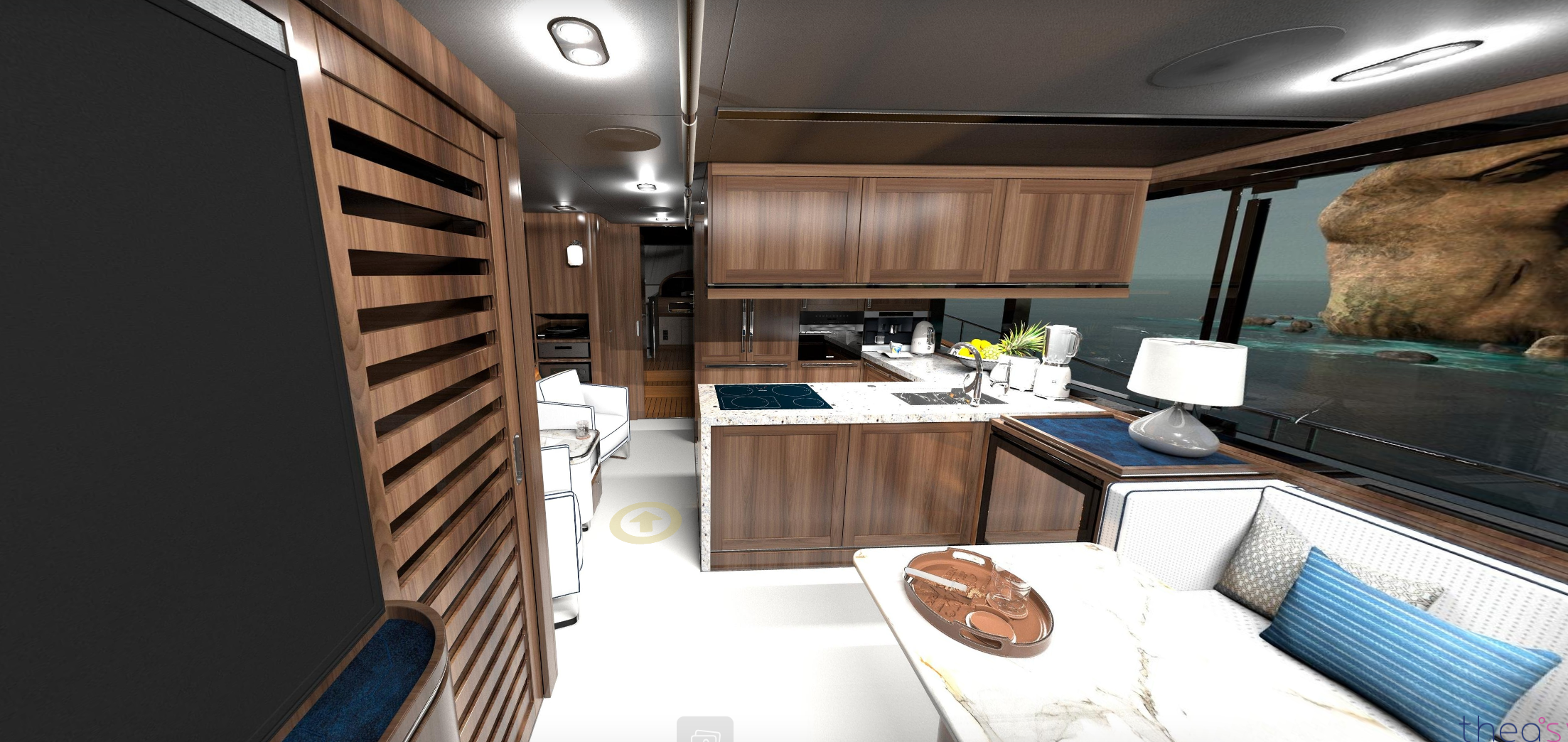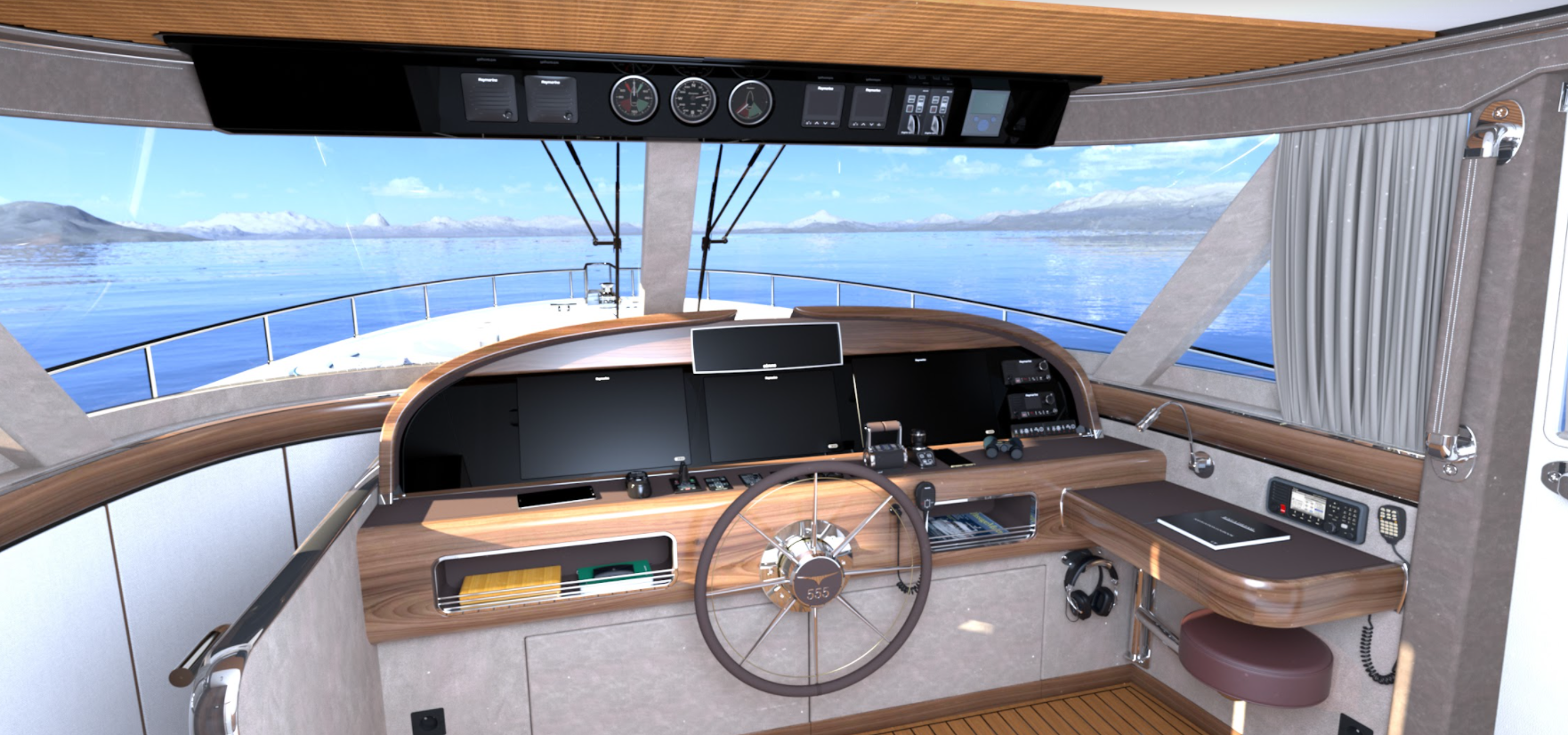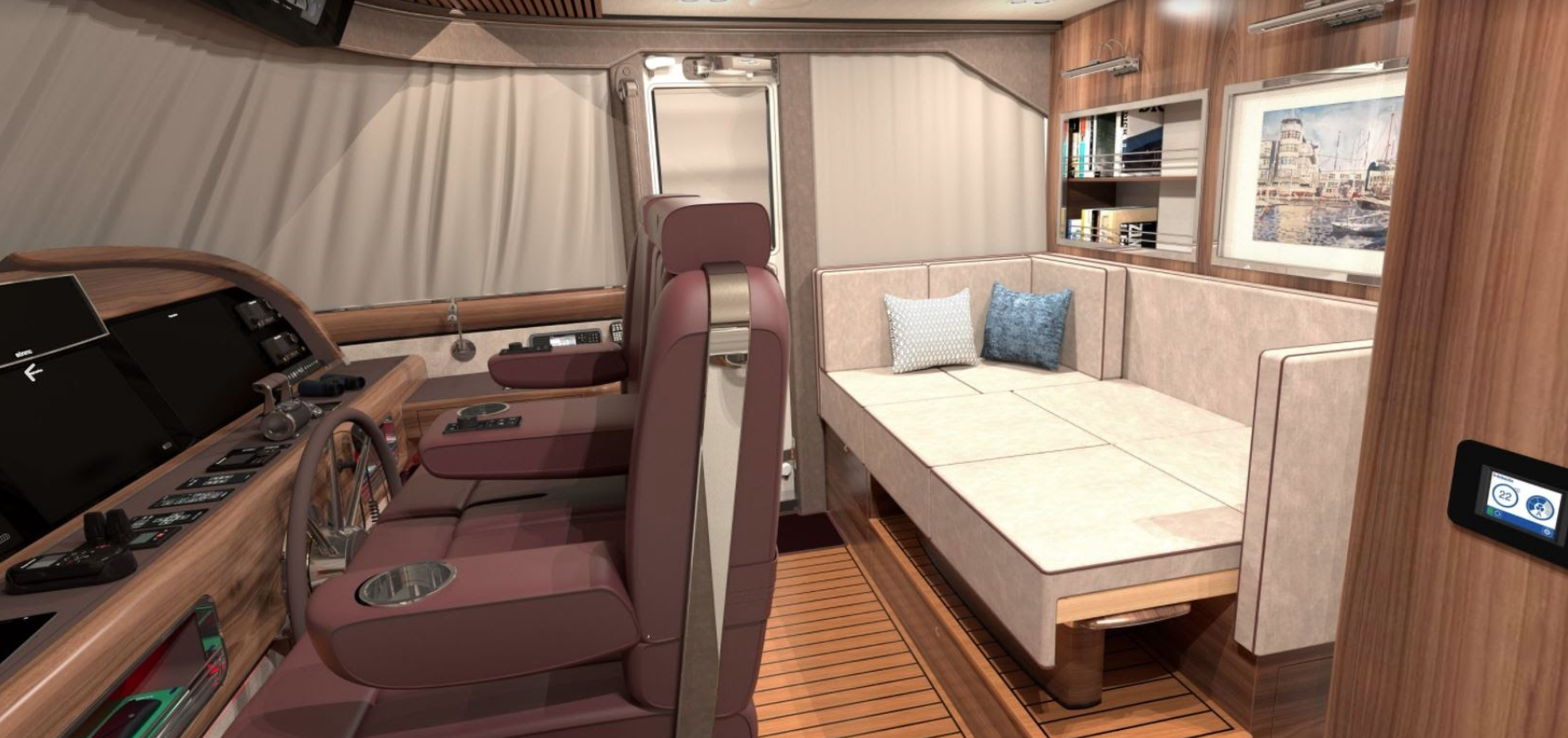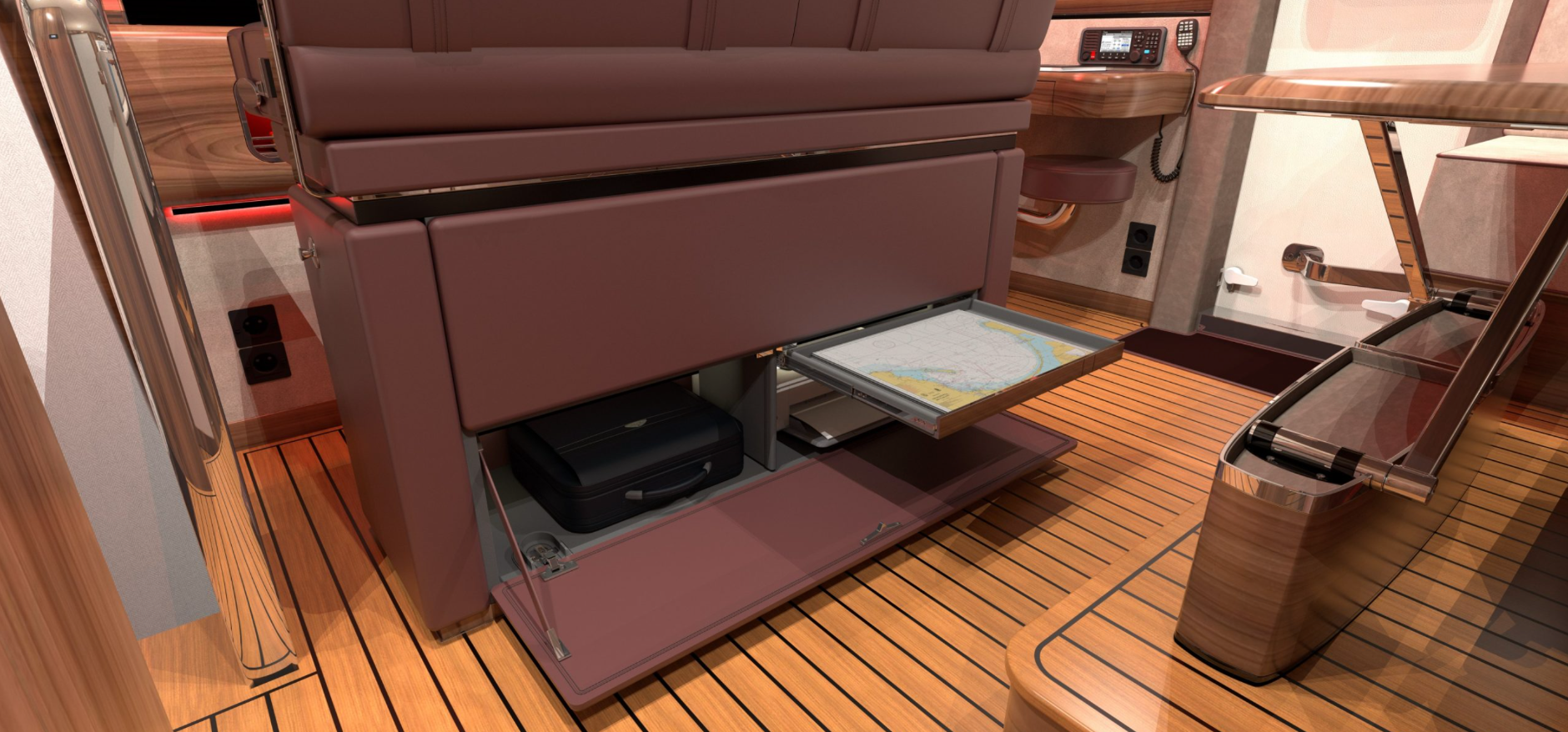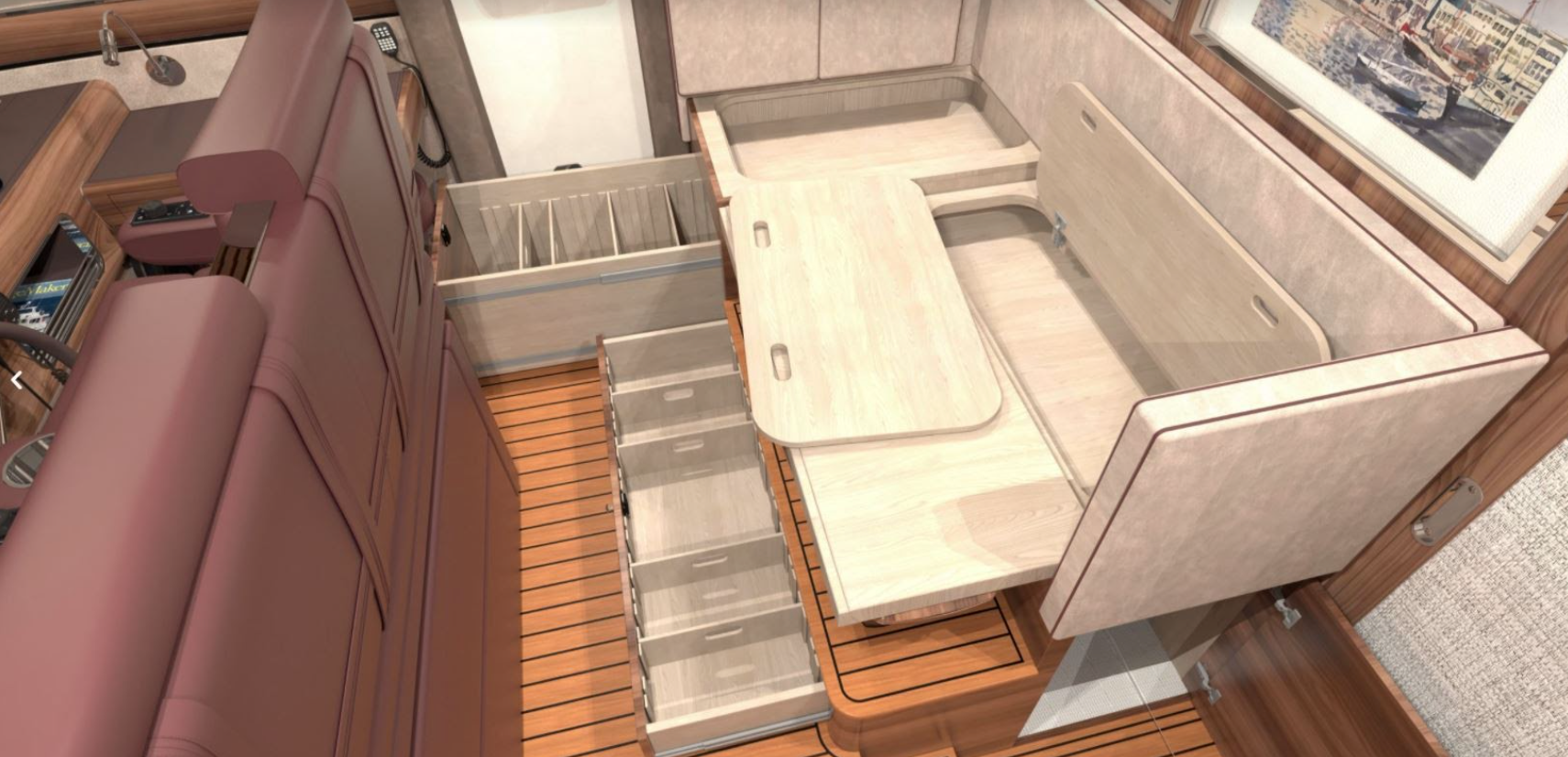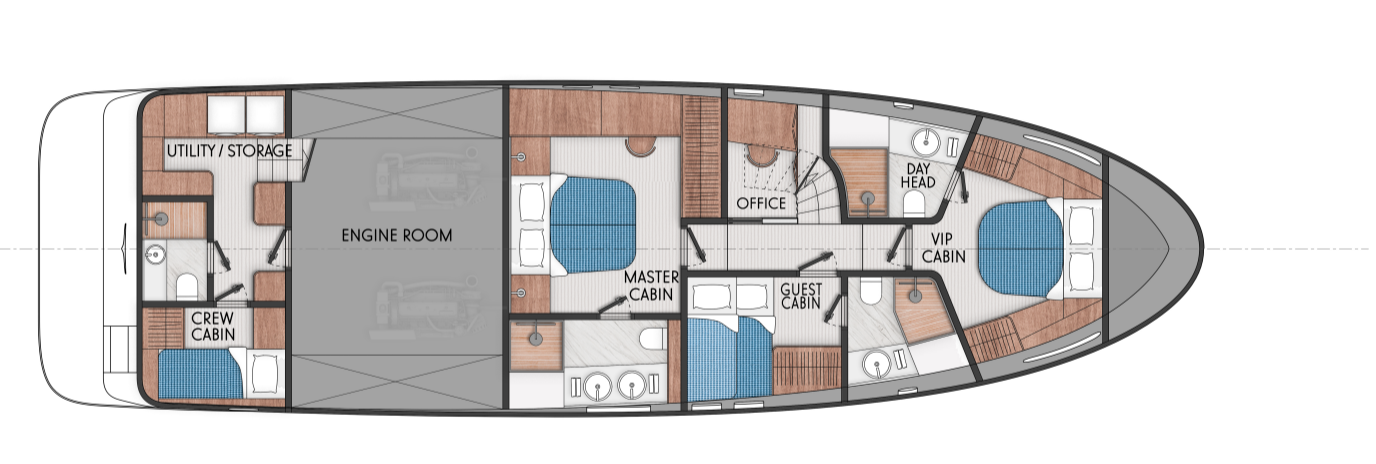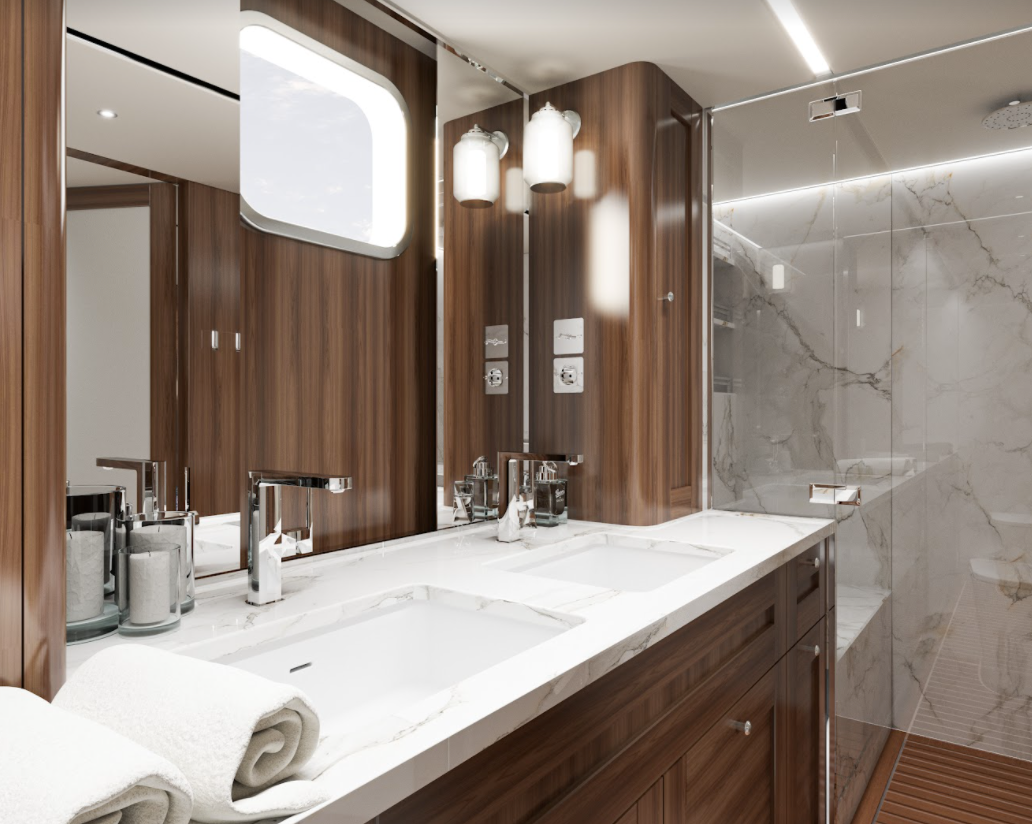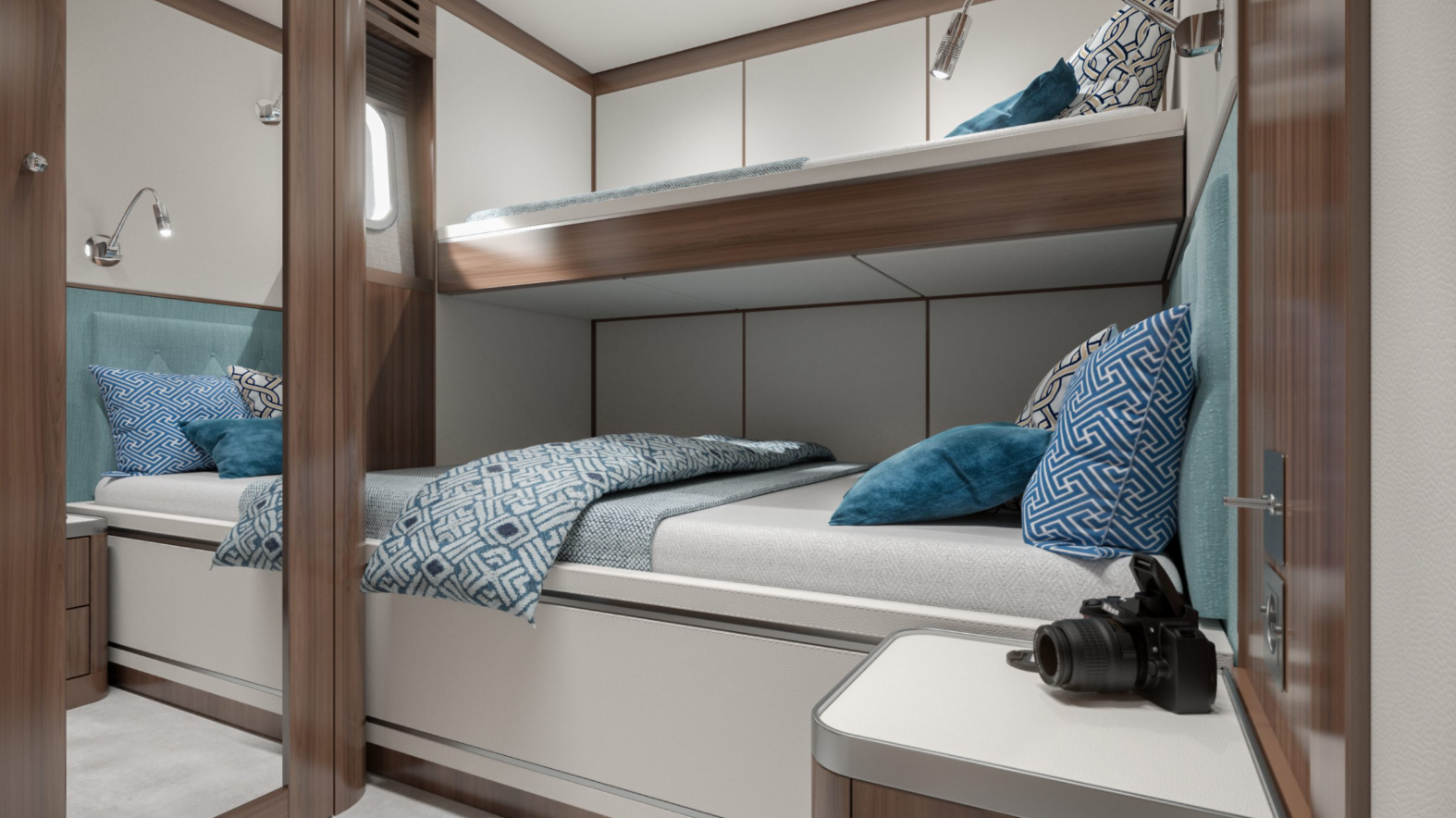Access More Boat Tests
Already have an account? Login
Cormorant Yachts COR555/690 (2022-)
Brief Summary
Cormorant Yachts is a new boatbuilder located in Gdansk, Poland. Cormorant is creating a niche that encourages maximum buyer participation in the build process and each boat will undoubtedly be different in specific purpose, layout, power and equipment. Its first build is the COR555, designed to be a long-range cruiser or trawler, that is efficient to operate. She is powered by twin John Deere 330-hp engines and has three en suite staterooms.
Specifications
| Length Overall |
69'7" 21.11 m |
|---|---|
| Beam |
17'10" 5.43 m |
| Dry Weight |
100,060 lbs. 45,386.45 kg |
| Draft |
5.05' 1.54 m (T Draft) |
Engine Options
| Std. Power |
2 x John Deere 6068 330-hp |
|---|
Mission Statement
The mission of this vessel, because it is so highly customizable, is pretty much what the owner wants as long as it’s in the envelope of a trawler or long-range cruiser. Another mission of Cormorant Yachts, indeed its whole philosophy, is to involve the owner in virtually every aspect of the build’s decision-making so that the vessel created fits the owner’s needs and desires like a glove — from being a comfortable cruising platform around home to trans-oceanic voyaging.
Custom Building
The principals of Cormorant Yachts understand that each owner will have individual needs because he/she will be of varying ages, have different lifestyles, use leisure time in dissimilar ways and be wildly different in their boating experience and expectations. They will also have disparate expectations for the finish aspects of the vessel depending on their priorities. Some may want to build a boat as inexpensively as possible, while others will want the finest boat in class, no matter what it costs.
By offering existing hull and deck moldings in three sizes — COR555/690, COR 710 and COR880, a prospective buyer can start with the basic size and price tag wanted and build from there, thus saving time and money compared to a “from scratch” custom build. This is not a new concept and it’s one that has served several brands well.
The Ultimate Personalization. Interestingly, Cormorant tells us that the superstructures will be mostly custom. That is a remarkably desirable option for any owner concerned about the aesthetics of the boat. While the hull shape affects performance, the deck bears on utility and layouts determine functionality, it is the boat’s superstructure that signals the mission of the vessel and the personality of the owner.
Designing the superstructure is, we think, the ultimate personalization of a yacht. That is why billionaires spend tens of millions of dollars on the styling and look of their superyachts from the deck up, making the designers themselves millionaires in the process. Cormorant Yachts allows the same degree of personalization to clients who are mere millionaires.
Cormorant customers are encouraged to participate in the fitting out process, right down to the selection of option alternators and thru-hull fittings. For example, on request, Cormorant Yachts will happily build according to ABYC rulers for Americans. In fact, that will be required, just as meeting CE requirements for European-bound boats. But in either case, the RINA classification society will “supervise construction,” according to the company.
We highly recommend that boaters interested in the degree of detail of the COR555/690 should visit the builder’s specification page, where there are 539 line items of standard and optional equipment with prices. We’ve never seen anything quite like it on a builder's website.
Specifications for the COR555/690
Guidance From Cormorant
On its specification sheet, Cormorant outlines the planning process: “At the entire design stage, it is possible (for free) to introduce changes up to the moment that the shipyard orders components for the planned scope of work. In addition, it should be taken into account that the presented in the specification data especially calculations, tests and CFD simulations, particular requirements for speed performance and fuel consumption, are presented to averaged values of installed equipment. They are especially influenced by the weight of the unit. Generally, you can estimate that 1 ton of equipment makes a difference of about 0.5 knots in speed with the same drive power.
“All data is intended to approximate and familiarize you with the differences in equipment. The order fulfillment time depends on the production load, but it is not shorter than 14 months.”
The Back Story
First of all, Poland is now the largest producer of recreational boats in Europe. Second, the famous Gdansk Shipyard (formerly the Lenin Shipyard where Lech Walesa worked), as well as greater Gdansk, is the epicenter of large-yacht construction and home to many yacht builders, including Cormorant Yachts. This beautiful port city has 18th and 19th-century buildings lining the harbor, which makes it one of the most picturesque cities in Poland. More important, it has a long history of shipbuilding.
Gdansk was founded by the Teutonic Knights at the end of the 14th century, but 50 years later the Poles took the town. In 1844, the Prussian government established its shipyard in Gdansk (then called Danzig) and by the beginning of the 20th century, the shipyard was the largest employer in town with more than 6,000 workers. The tradition of boat building was handed down father to son so it's not surprising that recreational boat building has so many skilled shipwrights.
Since Cormorant Yachts is a new company, BoatTEST wanted to investigate the company and the backgrounds of its principals before bringing the COR555/690 to our readers. We discovered that the company had been in the works for more than three years as its principals assembled the CNC and Felder carpentry machines needed as well as recruiting experienced nautical engineers and shop-floor personnel. The company says that 100% of its investment capital is Polish.
All molds have been made for the COR555, the COR710 and the hull and deck molds have been finished for the COR880, says the company. The first two yachts have been sold and hull #1 will be launched in the spring of 2022.
The managing director of the firm is Damian Dymecki, a graduate of the Warsaw Academy with 15 years of experience managing large projects. Grzegorz Wladzinski, the company’s naval architect, has extensive experience in the maritime industry. Many of the yard’s team have worked for Sunreef Yachts, Galeon Yachts and X-Yachts, we are told. All three of these builders are generally considered to be among the very best in their respective categories.
Major Standard Features
- A choice of plans on the main and accommodations decks
- RINA classification society supervising construction
- Twin 330-hp John Deere engines
- 1,717-gallon (6,500 L) stainless steel fuel tank
- Fully equipped galley with Bosch equipment
- Side-Power electric or hydraulic bow thruster
- Dockmate remote controller
- 3 en suite staterooms
- 5 optional layouts offered at no extra cost
- Robust electronics package
Difference Between the COR555 and COR690 models
The main differences are in the length of the unit after it's completed. The dimension 555 was created for those who want to achieve the largest possible interior space while maintaining dimensions close to 55’ (16.76 m). The 690 is a model with a large platform built on an elongated version of the hull. The long platform is a space to stay close to the water. The extra storage space under the deck is useful for storing supplies and water toys.
Performance
BoatTEST has not been on the boat, so performance figures are all theoretical at this point. But since naval architect Wladzinski has a degree in Computational Fluid Dynamics (CFD), we’ll take his word for the projections.
Cormorant spent extensive time performing computational fluid dynamics (CFD) analysis to refine the bottom design, including an optional ($21,000) bulbous bow. The company also used the analysis to ensure that the storm drains in the deck remove water with maximum efficiency.
“We are absolutely convinced that traditional design methods must be supported by the latest knowledge and technology,” said Wladzinski. CFD analysis let the Cormorant designers look at how the boat would handle myriad conditions.
Below is a chart show estimating the COR555’s speed with a selection of engines at any rpm setting. This theoretical information is based on each engine's torque curve. Boats of this type typically travel from 7 to 10 knots depending on circumstances. At displacement speeds or slightly higher.
Pick a speed, say 8 knots, then run your finger down the column and note how many rpm the engine must turn to attain that speed. Go to the Cormorant Yachts website to see how much each engine will cost and the standard John Deere 330.
Boat Inspection
Flying Bridge
Starting on the top level, the COR555’s flying bridge has a 14’5” (4.4 m) aft boat deck and a crane. Stairs, not steps, lead below to the aft deck. Forward to port, a bar includes an electric or gas grill, a refrigerator, an icemaker and a sink. Opposite to starboard is an L-shaped lounge around a solid wood table plus individual folding chairs. Forward, the centrally-positioned upper helm has side-by-side captain’s chairs, a full complement of instruments and controls plus lounges on each side so guests can keep the captain company. The flying bridge can be optioned with a Bimini top or a fiberglass hardtop.
The Bow
After descending the stairs to the aft deck, we head forward on side decks that are 19.69” (50 cm) wide. Forward, the COR555’s foredeck has a sofa-style lounge and table just ahead of the windshield. A forward lounge converts to a large sunpad. All of these are on top of the trunk cabin and forward are ground tackle including a Maxwell windlass and anchor and rode storage.
The Aft Deck
Back down the side decks to the aft gathering area, Cormorant leaves it a little more open with lounges on each side of a wood table. The aft deck is also raised above the swim platform. There is a gate built into the transom to access the platform on the starboard side. Warping winches and chocks are in each aft corner.
The Salon
Moving indoors, we enter the salon via a sliding glass door that’s built in-house. An owner can choose to have the galley placed aft to more easily serve the aft deck or have the salon aft to starboard. Either way, the galley is stocked with a full complement of appliances including a full-sized refrigerator, a dishwasher, a microwave oven and even a trash compactor.
The salon has a larger table and wraparound lounge to starboard with two single chairs and a smaller table to port. Cormorant says that all furniture is made of .59” (15 mm) and .71” (18 mm) thick veneered plywood and decorative strips are made from solid wood. A day head lets guests answer nature’s call without having to head below and there’s a hanging locker just outside the entrance to the pilothouse. These are items usually found on larger yachts.
The Pilothouse
A door in the bulkhead forward of the salon leads to the COR555’s pilothouse. The lower helm looks like something on a larger yacht with VDO AcquaLink analog gauges and other accessories above the windshield. Below in the vertical section of the dash, there’s space for three Raymarine 19” (48.26 cm) multifunction displays. The steering wheel is fixed and on the flat just ahead are digital shift and throttle levers, a joystick and other functions including controls for the thruster and Maxwell windlass.
There are two separate seats for the captain and a companion. The captain’s seat has controls in the armrests for docking and the chartplotters. On the backside of the helm seats, a plotting screen pulls out on a drawer-style slide and there’s a ton of storage.
Abaft the helm area, there’s a lounge and table on a raised platform. The table can be lowered and the lounge converts to a berth for an off-watch nap.
Accommodations Deck
Stairs from the salon lead to the cabin deck. Cormorant offers optional layouts including the VR tour model with three en suite cabins. The master stateroom is positioned at amidships and there’s an office with a desk, shelves and storage that can be converted to a walk-in closet or used for other purposes.
Utility and Engine Rooms
The crew quarters and a utility room are accessed from the swim platform. There's also access to the utility room by stairs from the salon and the side deck. The utility room has space for a washer and dryer, plus a countertop with a sink and ironing board, storage and an extra head. A door in the utility room opens to access the engine compartment, which can also be entered via the salon. This could be helpful in rough conditions.
Inside, the engine compartment has nearly 6' (1.8 m) of headroom, according to the builder, and this is quite good by modern standards. Cormorant focused on creating a spacious area that provides access to the twin John Deere diesels and related equipment to make it easy to perform routine maintenance. The engines are equipped with an (optional) Aquadrive system (which we recommend) and the fuel system is set up with redundant equipment to ensure that small issues can be dealt with easily.
Construction
Cormorant builds the COR555 with vacuum-infused laminates. The hull bottom is cored with foam except for the keel, bow, chines and shaft housings, which are solid fiberglass. The company says it will make the bottom solid fiberglass if a buyer prefers. Six stringers run full length and the bulkheads are cored with foam, as are the main deck and superstructure. The hull and deck are bonded with 3M 5200 or similar sealant and bonded with fiberglass around the perimeter.
Price
$1,534,773.50 (€ 1,300,000) with twin 330-hp John Deere 6068 inboards.
Limited Warranty
60 months
Observations
The Cormorant COR555 looks to be a seaworthy long-range cruiser. Clearly her builders know what they are doing. Following the trend of modern trawlers, she’s powered by twin engines and can get up and run faster speeds if necessary, but lope along at lower displacement speeds and lower rpm. Our test of several other trawlers indicates that fuel consumption is lower with the higher horsepower engines at displacement speeds.
We find the base price attractive and the question will be, how much does she cost with all of the extra equipment you will probably want? The folks at Cormorant Yachts have answers for that, just go to their specifications page, pick out what you want and see the charge. Click here...

